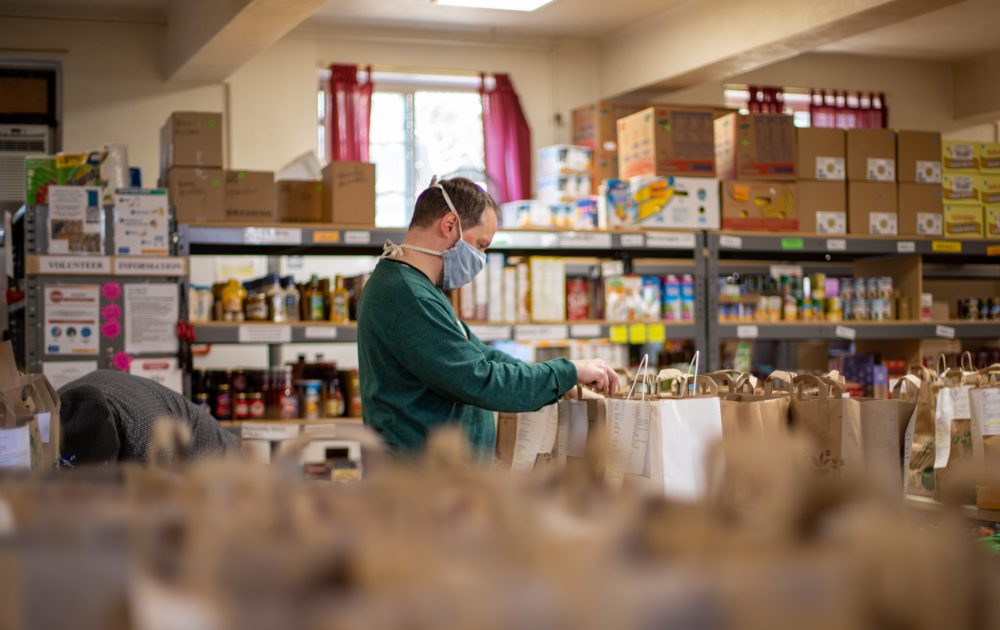When you think of single parents, you likely think of single moms struggling to raise their children and working full-time to support their families. While it’s true there are more single mothers than single fathers in the United States, the number of single fathers is growing. According to Statista, “In 2020, there were about 15.31 million children living with a single mother in the United States and about 3.27 million children living with a single father.” Yet, many of the support programs such as WIC are dedicated solely to women and their children. What financial support for single dads is available?
Where to Find Financial Support for Single Dads
Unfortunately, single dads don’t have specific financial programs for them as women do. Yet, 25% of single dads live in poverty and need financial assistance (Fatherhood). Thankfully, resources are available for any parent living at or below the poverty line.
Food Assistance
One of the most important needs for single parents is providing their kids with enough nourishing food. These programs can help.
National School Lunch Program
You can sign up for the National School Lunch Program at your child’s school. If your household income is below 130% of the poverty level or you receive SNAP or TANF (more on those later in this post), your child qualifies for a free lunch every day. If your household income is 130% to 185% of the federal poverty line, your child qualifies for a reduced-priced lunch.
Summer Food Service Program
This program is run during the summer when school is out and children no longer have access to free lunches. ANY child 18 and under can receive a free meal. No registration is required. Food distribution sites are typically at your local school district. You can go here to find a location near you.
Supplemental Nutrition Assistance Program (SNAP)
SNAP provides money for low-income families to purchase approved foods. To qualify, you must apply at your local state office. Generally, SNAP qualification is based on your income (gross income must be below 130% of the poverty level), your assets, and the number of people in the family.
The Emergency Food Assistance Program (TEFAP)
TEFAP is another safety net that provides food at no cost to eligible recipients. If you qualify for and receive SNAP, you automatically qualify for TEFAP. If your gross income does not exceed 185% of the federal poverty level, you also qualify.
To apply, you must go to your local TEFAP distribution site, bring your driver’s license, and answer a few basic questions.
Food Pantries
Another place to go when you’re having trouble providing food for your family is a local food pantry. Most food pantries are allowed to give one family food once a month or sometimes twice a month. Many families take advantage of this when they have a week or so left before they get their next month’s SNAP benefits and they are running low on food at home.
Soup Kitchens
Don’t forget that you can also get a hot meal at your local soup kitchen. Incidentally
Medical Assistance
Medical care is expensive but should not be neglected. These agencies can help provide financial support for single dads when it comes to medical costs.
Medicare
Medicare is typically for individuals 65 and older, but if you have a disability or your child has a disability, you or your child may qualify for Medicare. (You can learn more about qualifying here.) If you are under 65 and receive Social Security Disability, you are qualified for Medicare.
Medicaid
Eligibility for Medicaid varies based on which state you live in. Medicaid provides coverage for low-income families, qualified pregnant women and children, and people who receive Supplemental Security Income (SSI). To learn more, go to your state’s Medicaid website.
Other Assistance
Besides food and insurance expenses, a single father may have other financial needs depending on his income and family size. These programs are also available to eligible recipients.
Low Income Home Energy Assistance Program (LIHEAP)
Depending on your location, winter heating bills or summer air conditioning bills can cause financial hardship. The Low Income Home Energy Assistance Program tries to fill that need. However, the earlier you can apply, the better. When the program runs out of money for the year, even qualified applicants do not receive funds. On average, 20% of the people who qualify receive the funds.
The applications are accepted and reviewed through your local LIHEAP office. Some offices automatically qualify people who receive SNAP, TANF, or SSI. Others do not, so you’ll need to contact your local office to determine what you need to qualify and how much relief funds you may receive. Some offices also set aside funds to help you with weatherization, so you’ll pay less in the future.
Child Care Subsidies
Child care can be a family’s most expensive bill, often even more expensive than monthly rent or mortgage payments. To assist with this need, the federal government gives each state money to subsidize child care. Go here to see what your state offers.
This program mainly helps low-income families where the parent works full-time but earns less than 165% of the federal poverty level, teen parents enrolled in high school or GED programs, people currently living in a homeless shelter, and those who are unable to work due to a disability.
Final Thoughts
Being a single parent isn’t easy! Thankfully, there is financial support for single dads, but you will have to apply to many different agencies to get the variety of aid available. Educate yourself about what is available and apply as early as possible, so you have the best chance of getting aid. Also, don’t be afraid or embarrassed to take advantage of the available services. Remember, your financial situation may be temporary. In another few years, you may have a much better-paying job and be able to pay for more of your needs on your own.
Read More
Single Parenting and Home Schooling
5 Ways to Buy Legos at a Discount
13 Healthy Snack Ideas for Kids (Help Them Avoid the Snack Machine)
Where to Get Free Cloth Diapers for Low-Income Families
Melissa is a writer and virtual assistant. She earned her Master’s from Southern Illinois University, and her Bachelor’s in English from the University of Michigan. When she’s not working, you can find her homeschooling her kids, reading a good book, or cooking. She resides in Arizona where she dislikes the summer heat but loves the natural beauty of the area.


Leave a Reply